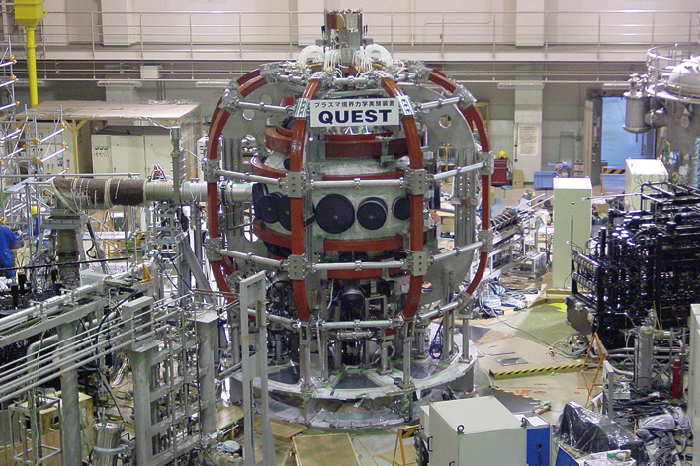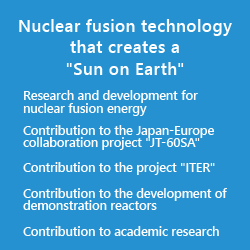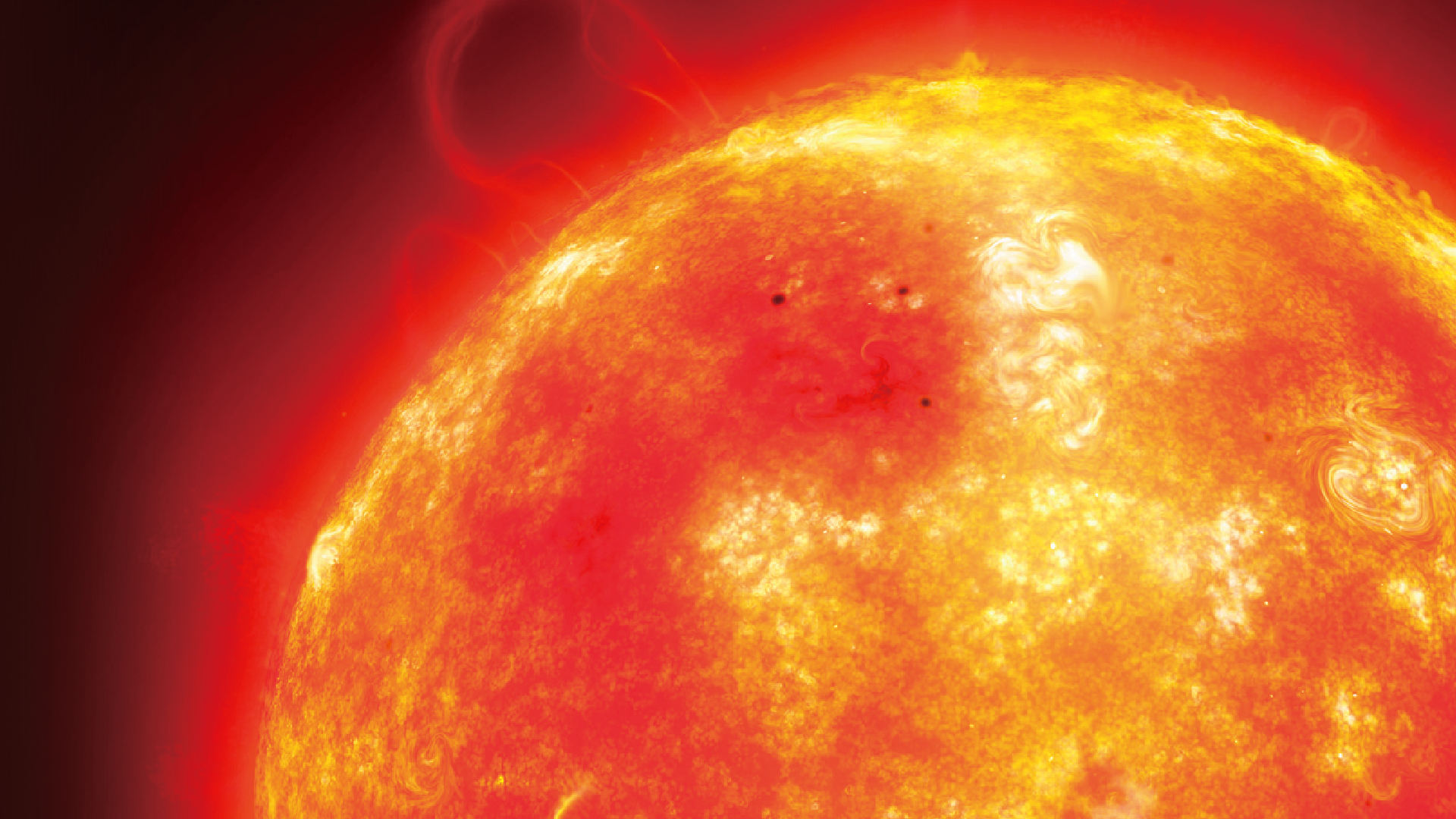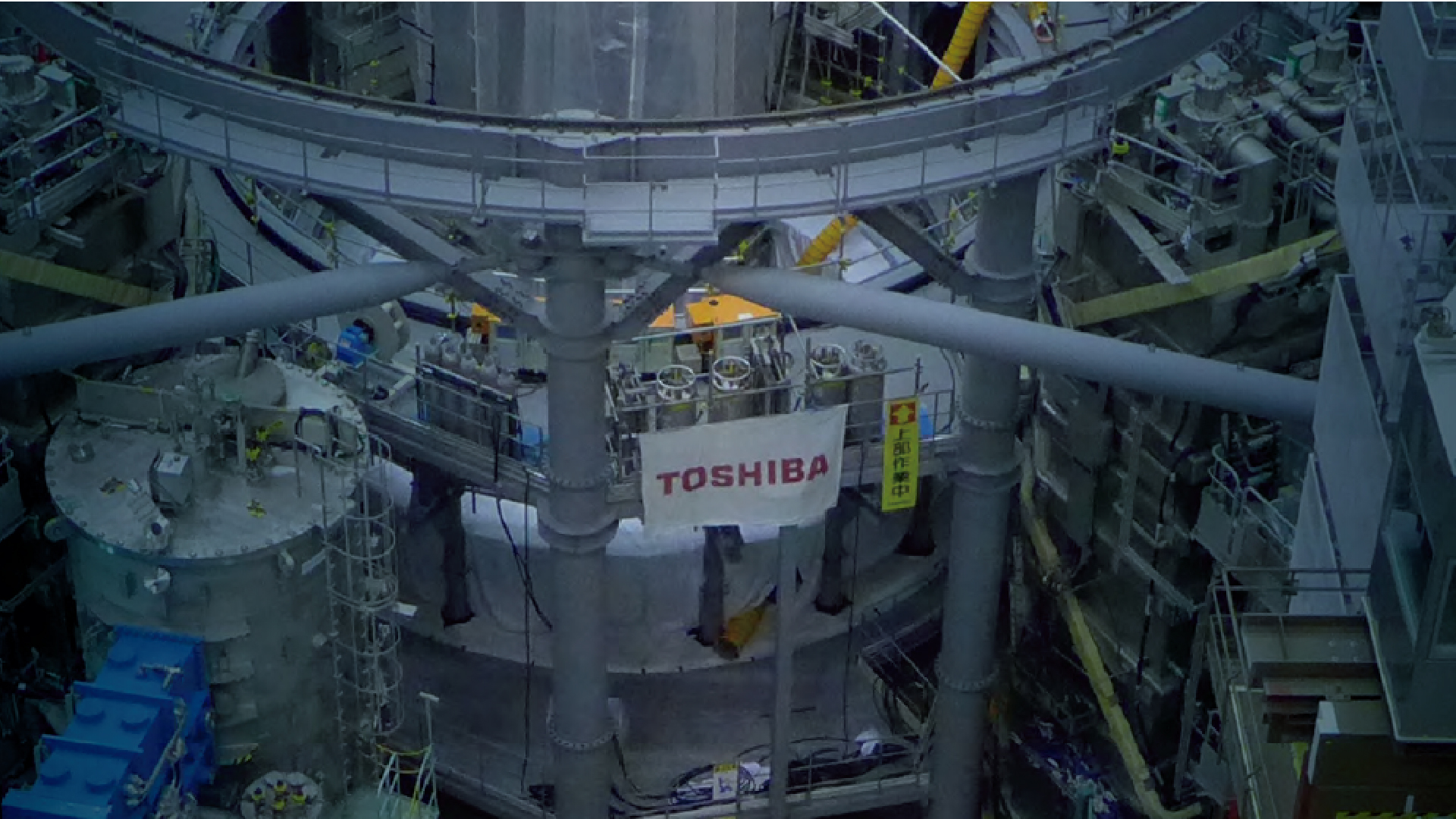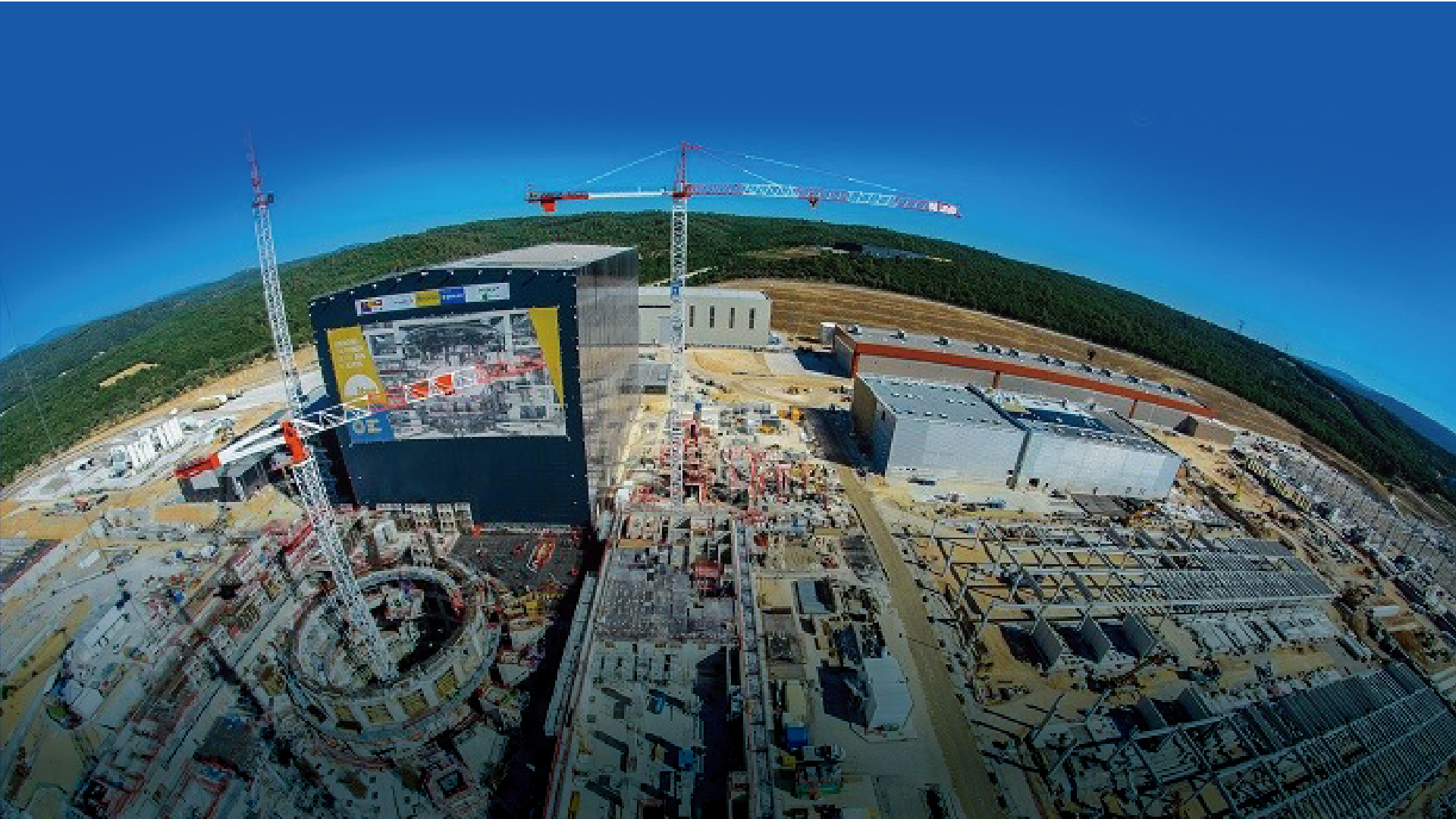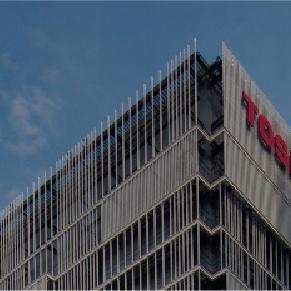Research and development
Ultimate energy aggregating the knowledge
The development of nuclear fusion technologies has been developing internationally as the ultimate energy supply.
We have been participating in domestic and international projects, such as JT-60, JT-60SA, and ITER, since the 1970s, when nuclear fusion research was launched. We will continue our efforts in energy development, which is necessary for the sustainable prosperity for humanity.
Research and development for nuclear fusion energy
For practical application of nuclear fusion energy technologies, scientific and technical feasibility studies are being conducted.
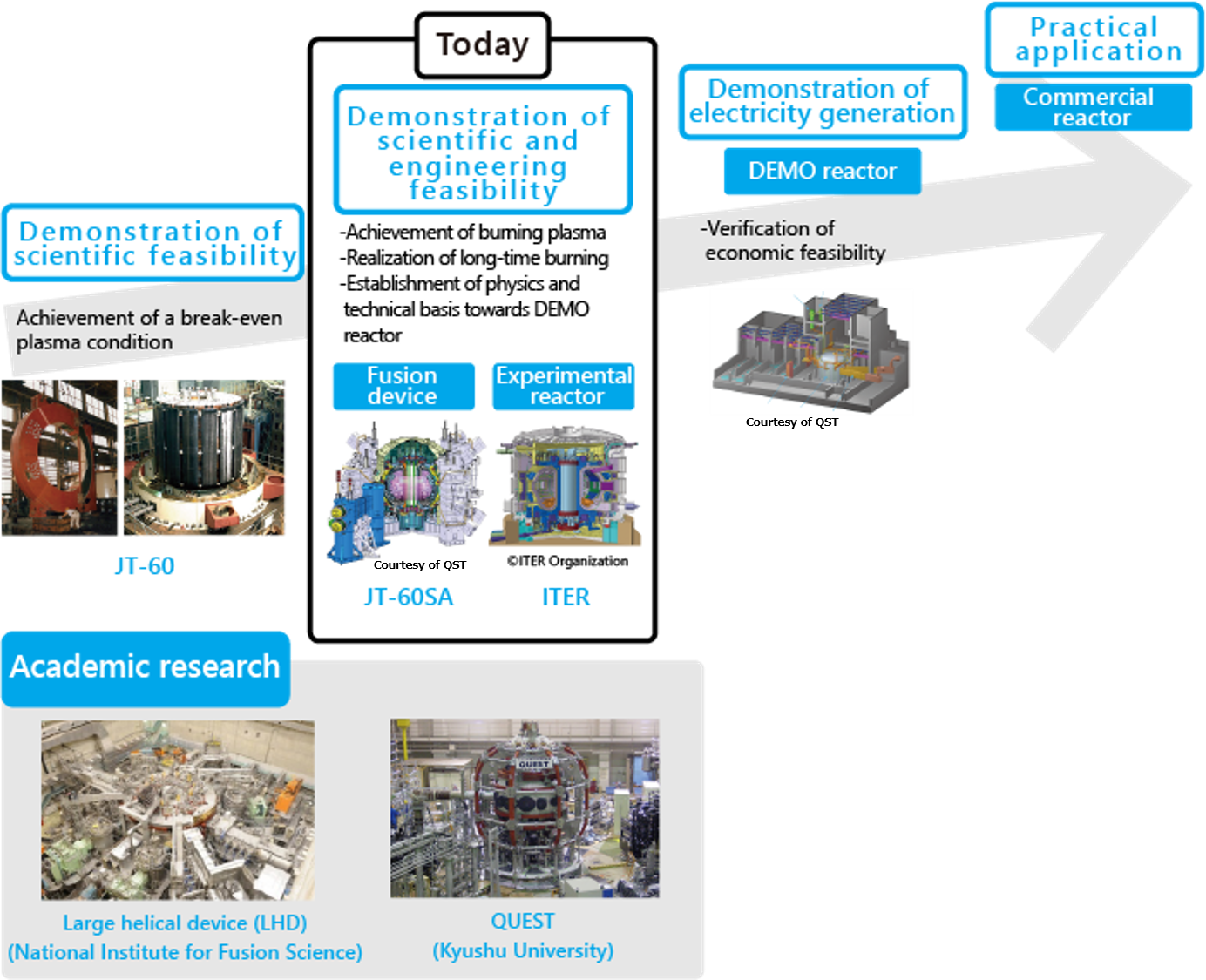
Contribution to the Japan-Europe collaboration project "JT-60SA"
Plasma enclosed in high-vacuum vessels
We supply the vacuum vessels, etc., and are in charge of the overall assembly work of the nuclear fusion device.
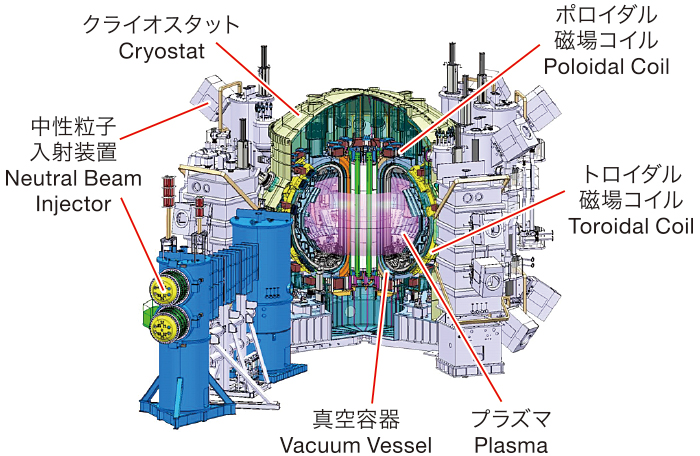
Vacuum vessel sector suppressing welding distortion
A torus vacuum vessel that was 10 m in diameter, 6.6 m in height, and 150 tons was divided and manufactured into ten double-walled sectors with D-shaped cross sections. Each sector was manufactured in the factory. Appropriate welding methods and their conditions were surveyed to suppress welding distortion. In addition, the manufacturing procedure, including the correction for weld distortion, was devised to reach the required product accuracy.
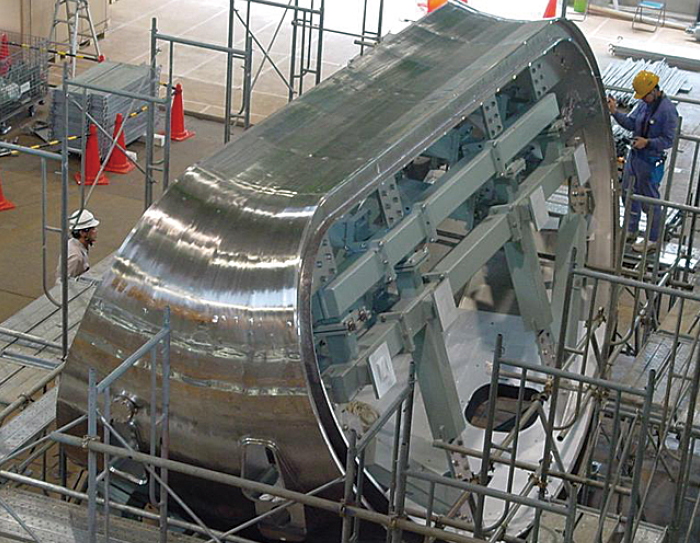
Precise assembly design of the overall equipment
In the overall assembly work of the Tokamak, we designed the assembly procedure and tools for the equipment, such as vacuum vessels, superconducting coils, heat shields, and the internal parts of the reactors, and manufactured them in Japan and Europe. We have also made the on-site work plans, including surrounding works to be done simultaneously.
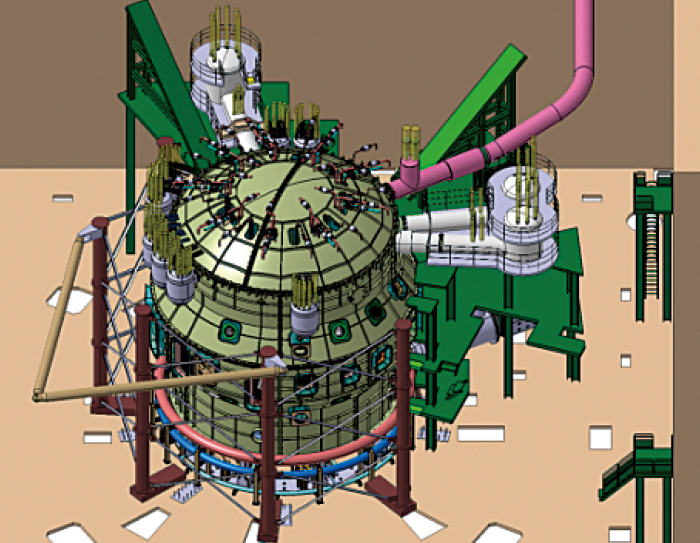
Vacuum vessel on-site assembly by 3D laser measurement system (340°)
During the on-site welding of the vacuum vessel sector, we utilized a 3D laser measurement system and installed, welded, and connected the sectors with high precision while adjusting their positions.
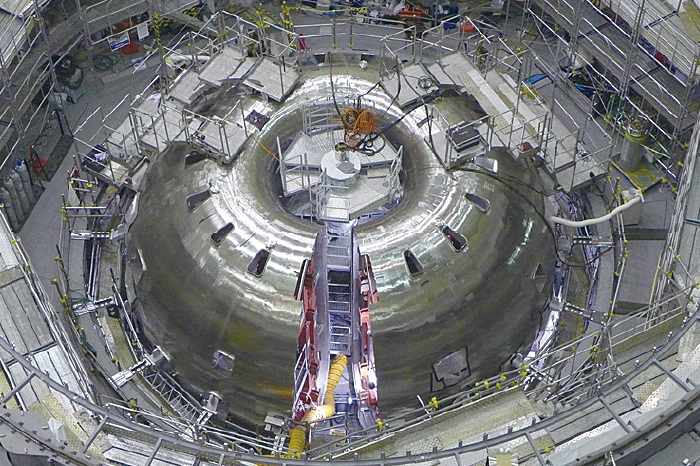
Contribution to the project "ITER"
Participation in concept design, engineering design, and dispatching engineers
The International Thermonuclear Experimental Reactor (ITER) is an effort to realize the world's first experimental nuclear fusion reactor. It aims to demonstrate nuclear fusion energy technologies for peaceful use. With the international collaboration of 7 participants, including Japan, the EU (European Union), the U.S., Russia, Korea, China, and India, ITER is being built in France. We have been participating in this project in the preparatory consideration stage and have made contributions to the concept and engineering designs. We are still contributing in the current manufacturing stage with the production of the TF coil, remote maintenance device, etc.
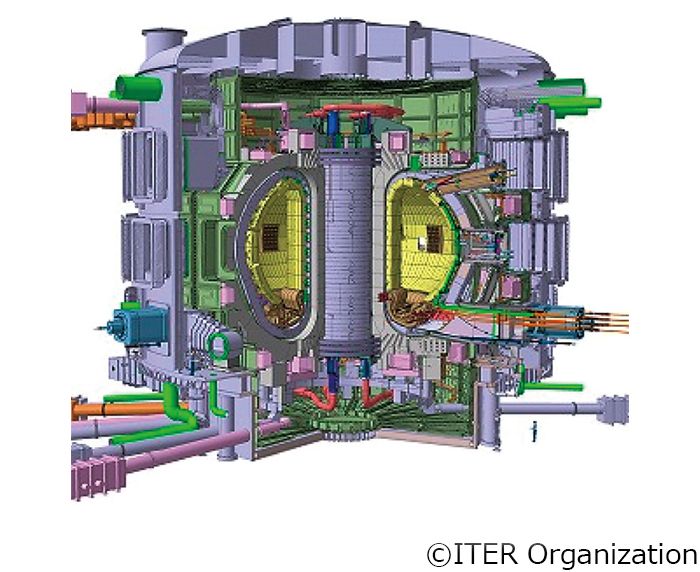
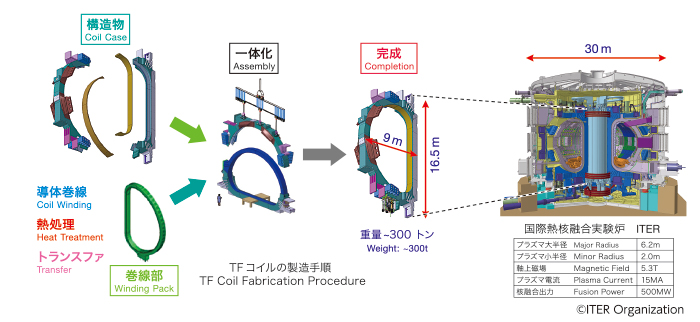
(Courtesy of the National Institutes for Quantum and Radiological Science and Technology/Fusion Energy Research and Development Directorate)
Designing and manufacturing the world's largest superconducting coil, "TF coils", with great precision
In the ITER project, we are involved in the design and manufacturing of TF coils (toroidal field coil). TF coils are large-scale superconducting coils and are 16.5 m in height, 9 m in width, and about 300 tons. The superconducting wire is wound into a D-shape and enclosed in the structure to support the electromagnetic force; the procedure must be done with an accuracy of millimeters.
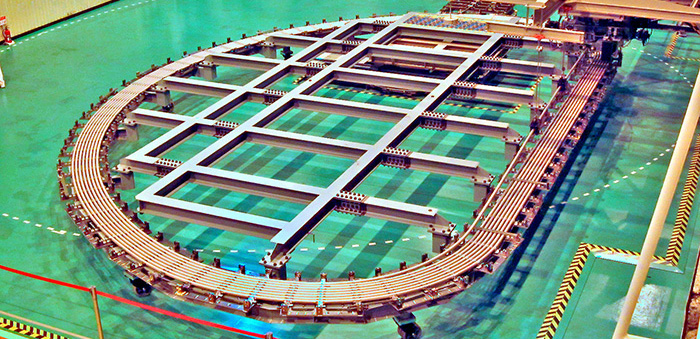
The International Thermonuclear Experimental Reactor (ITER) toroidal field coil/ITER TF Coil
Contribution to the development of demonstration reactors
Efforts toward power generation demonstration
We develop demonstration reactors with the National Institutes for Quantum and Radiological Science and Technology (QST). Based on the expertise obtained through our involvement with large-scale plasma experimental devices and ITER, we are contributing to realizing demonstration reactors with steady and stable electricity and that can produce several hundred megawatts. We endeavor to establish blanket systems with easier productivity and plant safety systems.
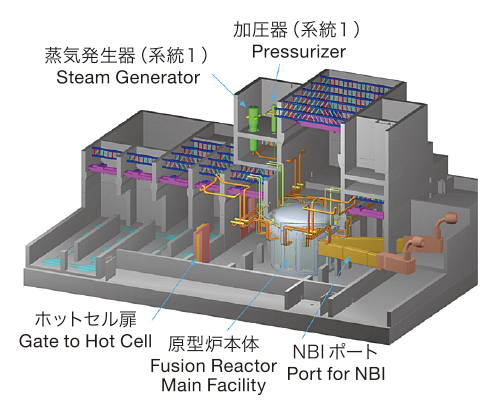
Contribution to academic research
We collaborate with the National Institute for Fusion Science, universities, etc., to promote to the academic research of nuclear fusion. We design, manufacture, and install Tokamak, helical, mirror, or other magnetic confinement machines, as well as heating devices, power supply, control system, etc.
Contribution to the large helical device (LHD)
This is one of the largest helical-type devices in the world. We have supplied the super conducting poloidal coils, heating devices, and flywheel motor generator. (Courtesy of the National Institute for Fusion Science (NIFS)).
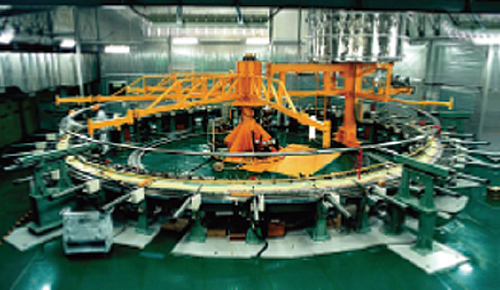
Contribution to QUEST
QUEST is a spherical Tokamak for plasma wall interaction experiments under steady-state, ultra-long pulse plasma production. We supplied the main facility. (Courtesy of Kyushu University).
